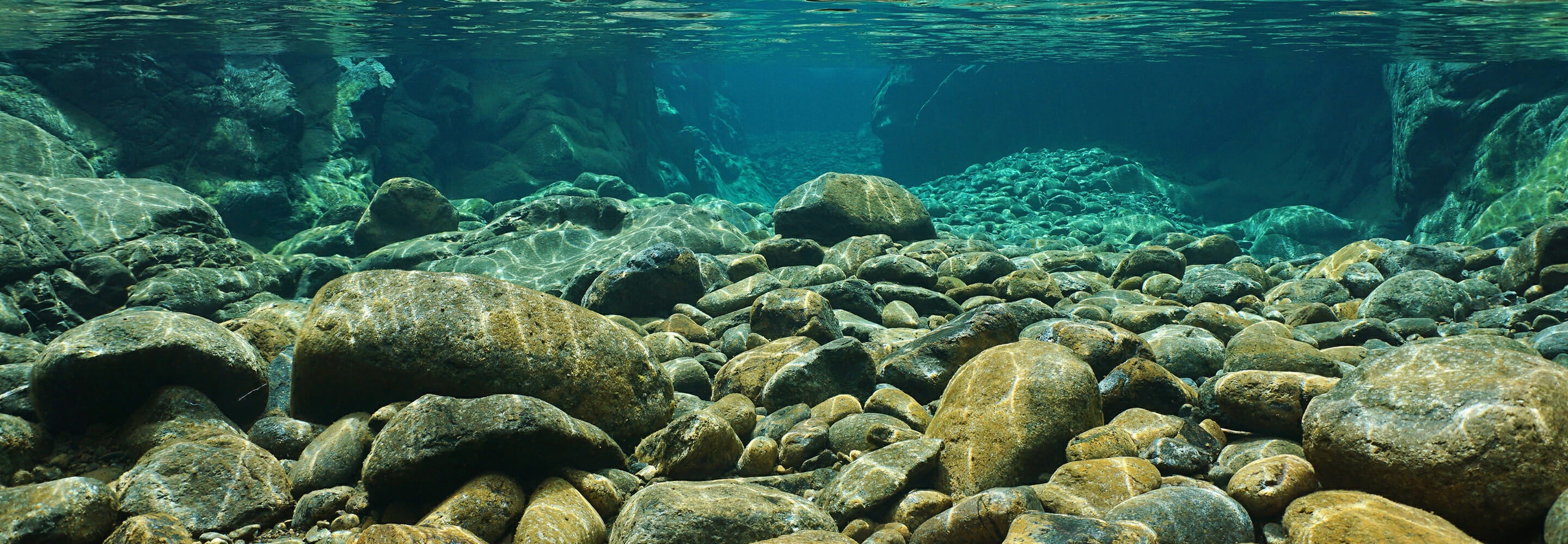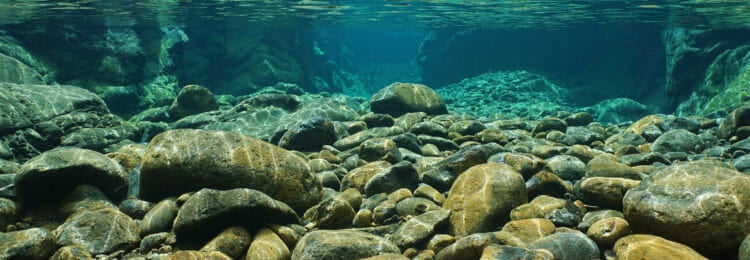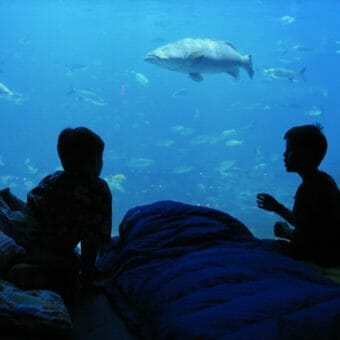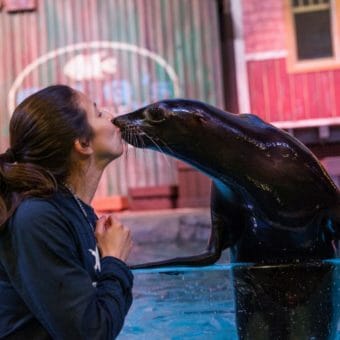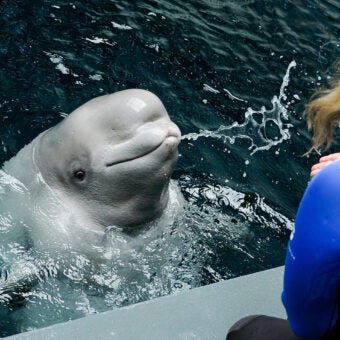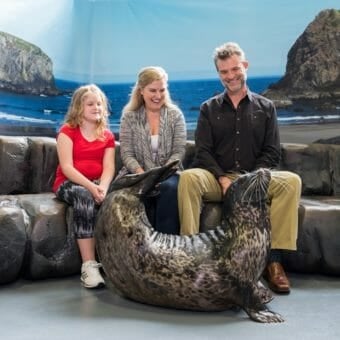-
Size
26 inches (66 cm) -
Diet
Kelp, seaweed and small invertabrates -
Range
Central Pacific Ocean -
Habitat
Rocky areas, kelp beds or tide pools
Physical Characteristics
- Coloration is commonly olive green but can range to gray-green or brown, with one to three pale spots on the back and often a white bar across the snout.
- Eyes are bright blue to bright green.
- The average size is almost 26 inches (66 cm).
Diet / Feeding
- Diet primarily consists of kelp or seaweed; also eats small invertebrates.
- Juveniles feed almost exclusively on algae in tide pools.
- Feeds on kelp by holding a piece of the plant in their mouth and twisting from side to side to break off a mouthful.
Range / Habitat
- Occurs in the Eastern Central Pacific, from Northern California to Baja, California.
- Found in rocky areas, kelp beds or tide pools.
- Juveniles usually live in tide pools, but upon maturation, leave for deeper waters.
- When in open water, inhabits areas up to 98 feet (30 m) in depth.
Reproduction & Growth
- Females and males broadcast gametes into the water to fertilize; larvae mature in the water column.
- Juveniles usually stay in tide pools until maturation.
Conservation Status
- “Least Concern” on the IUCN Red List.
Additional Information
- The opaleye can breathe air when out of water.
- Schools in small groups, but is most commonly found hiding near rocks or kelp, from which it can ambush small prey or hide from predators.
